What Is Keyword and Topic Clustering?
Lana Rafaela
Searchers want to find all the information they need in one place. Google rewards it, so we – the SEOs – meet their needs with topic clustering.
Today, I’ll explain how you can use keyword and topic clusters to increase your rankings. ?
What Is Keyword Clustering?
Keyword clustering is an SEO method in which you
? Keyword clustering groups contextually related keywords together, so you can target them with your content.?

? Example: Instead of creating two separate posts for ‘best sofa for living room’ and ‘comfortable sofa for living room,’ you’ll only create one post centered on the main keyword.
It will rank for both cluster keywords (“best sofa for living room” and “comfortable sofa for living room”).
Types of Keyword Clustering
There are two types of keyword clustering:
✔️ Word similarity clustering
✔️ SERP analysis clustering

Word similarity clustering would put ‘best sofa for small living room’ and ‘best sofa for small living room uk’ in the same cluster.
SERP analysis clustering looks at the similarity between search results for different keywords:

? Searchers are looking for the same thing using different queries. It makes sense to target this cluster with 1 article.
(The tools that use SERP similarity clustering, like LowFruits, look at how many identical URLs each SERP has. If 40% of the URLs in the top 10 search results are similar, LowFruits will group keywords.)
How to Use Keyword Clusters
I recommend the following approach:
? 1 cluster -> 1 article ?
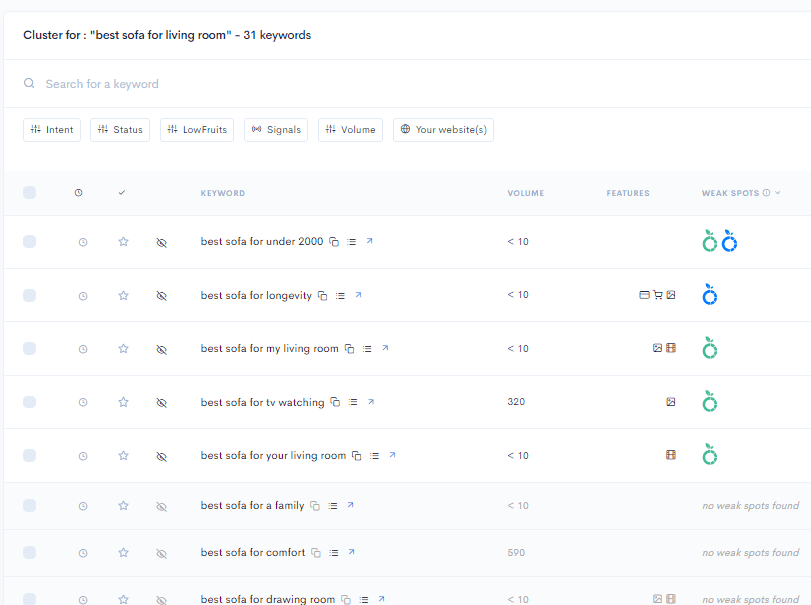
❓ Should I write a separate article for [XYZ] keyword?
If you can valuably expand on the keyword and create internal links.
If you can’t, keep the keywords grouped in 1 article.
What Is Topic Clustering?
?Topic clustering groups articles around related topics.?
Why?
- Answer every possible question your audience has
- Build your topic authority
- Decrease your bounce rate
- Share “link juice” with internal links between cluster articles
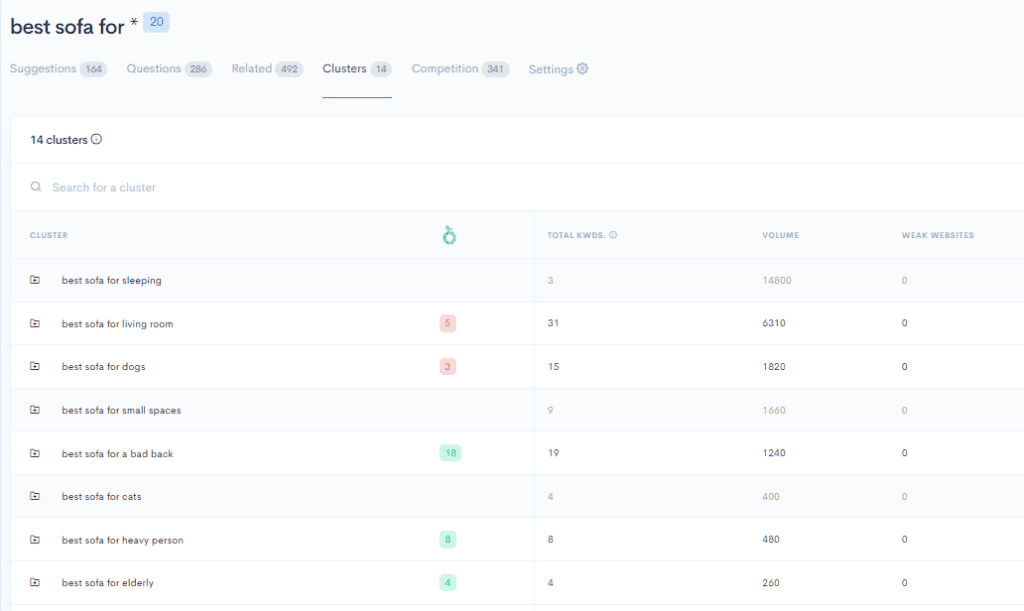
(Example: Your website is the best resource on sofas. You need in-depth content about different sofa types. When you create links between separate articles, you’re forming a cluster leading towards the central piece (“Best sofas”) and branching out into the specifics (“Best sofas for the elderly,” “Best sofas for living rooms”).
Why would a visitor return to the SERP if they can find everything they need on your site?)
How to Create Topic Clusters

The most famous topic cluster type is pillar page content.
? Start with the main topic (on the pillar page)
? Expand on the sub-topics (on cluster pages)
? Connect different pages with internal links
| Pillar content: | Content marketing |
| Cluster pages: | Content marketing best practices |
| Content calendar template | |
| How to create a content strategy | |
| Content marketing vs paid advertising |
Keyword and Topic Clustering Tools
Keyword and topic clustering can take time if done manually. Tools can help:
All-in-One Tools

SEO Scout
SEO Scout offers a variety of SEO tools. For keyword clustering, it uses NLP technology to analyze the top 30 results for your target keywords.
Pricing: From $49/mo

LowFruits
LowFruits is an all-in-one SERP analyzer.
Insert your seed keyword, and visit the ‘Clusters’ tab to see the broader topics and the total estimated search volume for each cluster.
Analyze the SERPs in your dashboard and see weak spots (websites with low Domain Authority but decent rankings.)
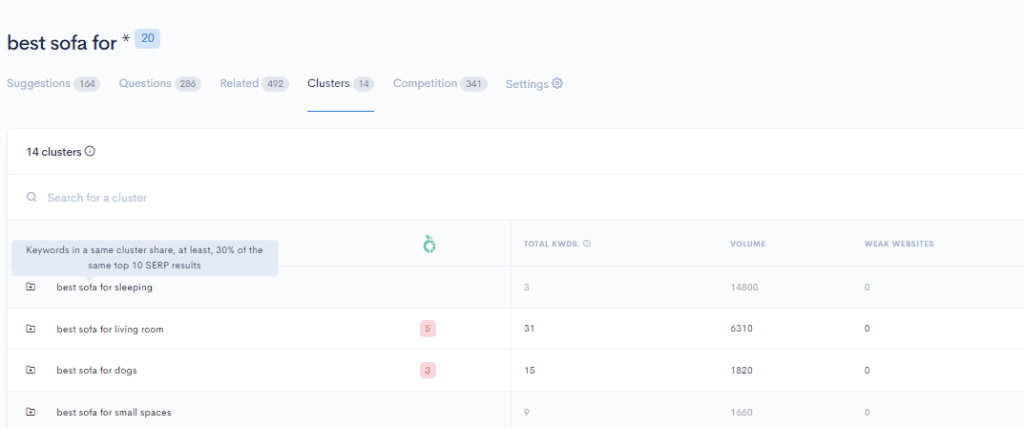
LowFruits Pricing:
- 10 free credits
- Additional credits from $25 for 2,000 credits
- Subscription plans with keyword extraction, credits included, and more features from $29,90/mo
3.3. Keyword Clustering Tools
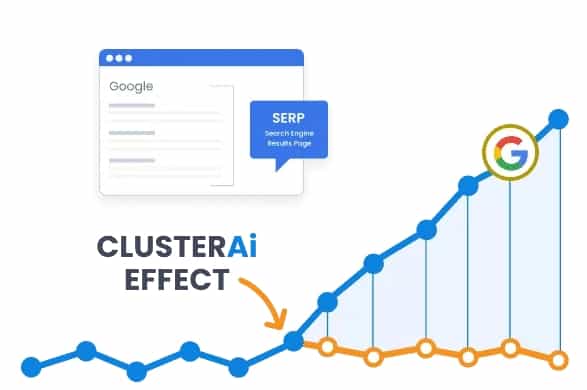
ClusterAI
ClusterAI crawls SERPs, compares pages, and matches keywords to give you the right clusters to target.
Pricing: Starts from $39 for 1,000 credits

Keyword Cupid
Keyword Cupid scrapes real-time information from SERPs and gauges the thematic connection between each query to provide keyword clusters you should target. The SERP Spy feature also offers content creation suggestions.
Pricing: Starts from $9,99/mo with 500 keywords

Keyword Insights
Keyword Insights offers a keyword clustering tool that uses SERP and intent analysis to create keyword clusters. What’s handy is that it suggests how to target them – with one or multiple pages.
Pricing: Starts from $9,99/mo with 750 credits
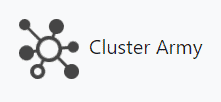
Cluster.Army
Cluster.Army uses a somewhat different approach, with word stems (e.g. wait-ed, wait-ing), keyword pairs, and primarily word similarity methods.
Pricing: Free
Topic Clustering Tools
Google Tools
Topic clustering starts with keyword clustering. If you use keyword clustering tools, verify the topics in SERPs with:
- Related searches
- People Also Ask
- Google autocomplete
Pricing: Free
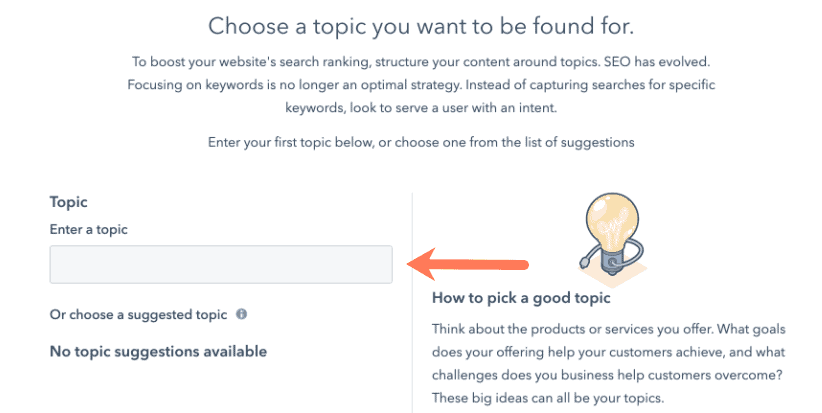
Hubspot Marketing Hub
If you use Hubspot’s Marketing Hub, its SEO tool offers topic suggestions. After creating the first topic, it’ll generate potential sub-topics for your cluster.
Pricing: Starts from $45/mo
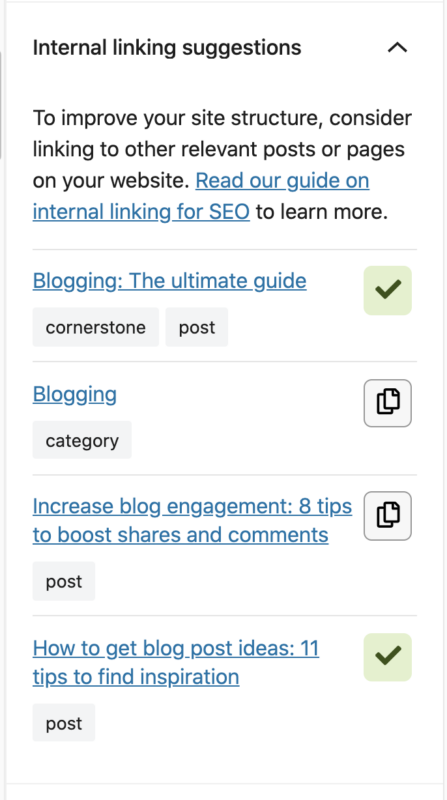
Yoast
Yoast’s WordPress plugin offers suggestions for internal links when you access a page or a blog post.
Pricing: Freemium, the premium version is $99/year
Recap: How to Use Keyword and Topic Clustering
- Keyword clusters: rank for multiple keywords with 1 article
- Topic clusters: increase your topical authority and dwell time
- Use LowFruits to quickly find keyword clusters
- Create pillar pages for topic clusters based on your keyword clusters (1 page for the main topic, multiple cluster pages for sub-topics, connect with internal links)
- ❗ Can’t valuably expand on a cluster keyword? Keep the cluster keywords grouped in 1 article
wow. i am really enjoying your case study.
so well researched. thanks for all your efforts.
keyword clustering and pillar page. when i read some
of these strategies around the net , i’m like a deer caught
in the headlights. thanks for bringing the puzzle pieces together.
Great stuff. Thank you. I’m leaning towards this approach. It really makes sense.